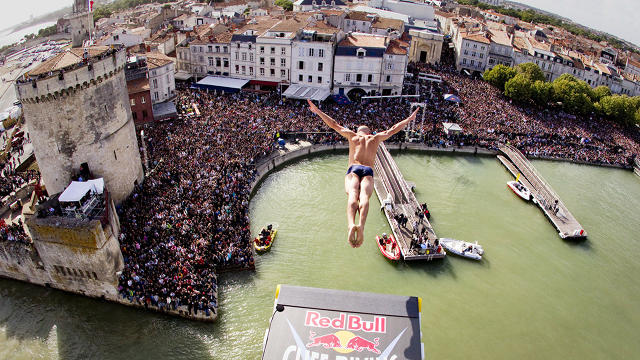Brands, It's Time To Get Moving: Why Action-Oriented Marketing Is The Way Forward
The greatest irony in advertising is that despite continued heavy media investments, branding doesn’t simply occur by staring at the TV or surfing the web. It happens best in the tangible interactions of authentic human experiences.
HUMAN DOINGS NOT HUMAN BEINGS
That’s because our brains exist for movement. As neuroscientist Daniel Wolpert states: “I would argue that we have a brain for one reason and one reason only. And that’s to produce adaptable and complex movement…Things like sensory, memory and cognitive processes are all important, but they are only important to drive movement.”So it’s no surprise that as Hunter Gatherers for many millennia, we traveled nearly 12 miles a day in search of food. Our brains remain designed to do things not watch things.
“REMEMBERING SELF” DECIDES

Brands are expectations of outcomes based on memories--heuristics or mental shortcuts to easier choices and better lives. Behavioral economist Daniel Kahneman indicates, when it comes to making decisions it is the “remembering self” that decides, not the “experiencing self.” How we feel largely depends upon our memory, not what actually happened.
BEHAVIOR PRECEDES ATTITUDES
Marketing models hold that attitudes precede behavior, that we must first shift beliefs and imagery to get sales. But as psychologist Timothy Wilson explains, “One of the most enduring lessons of social psychology is that behavior change often precedes changes in attitudes and feelings.”When we leap to a new behavior, we post-rationalize our actions through cognitive dissonance, seeking to reconcile the conflict and discomfort between our old ideas and our new actions. We assign causality to our novel responses, often falsely concluding that we made the conscious choice to act prompted by our established attitudes.
FLIPPING THE FUNNEL

But budgets are primarily spent shouting not doing, in an effort to be heard amidst fragmenting media and a widening competitive fray. Studies in North America have shown that on average we see 3,000 ads per day, and the average drugstore sells 350 different kinds of toothpaste!
Disruptive tactics foisting messages upon “eyeballs” has become the norm. Trying to force compliance through unwelcome intrusions is a losing strategy. It makes life more difficult when brands are supposed to be shortcuts to make life easier. It makes us feel bad when brands are supposed to make us feel good.
I have created a 7-step process uncovering the real forces in play in effective branding. These are the seven steps:
1) Interrupt the Pattern
2) Create Comfort
3) Lead the Imagination
4) Shift the Feeling
5) Satisfy the Critical Mind
6) Change the Associations
7) Take Action
Step 7 is: Take Action. If you don’t engage people physically, you are missing the most efficient way to sell your brand.
EXPERIENCE CHANGES EVERYTHING

When company founder Dietrich Mateschitz hired a market research firm to test the concept, the survey yielded catastrophic results. Mateschitz recalls, “People didn’t believe the taste, the logo, the brand name. I’d never before experienced such a disaster.” He ignored the research introducing Red Bull in 1987.
The traditional test was missing the context of live events that would become the keys to building the Red Bull Castle. From the start, the brand ignored traditional media by leveraging one of the most celebrated human experiences: a good (but not necessarily old-fashioned) party. The foolproof plan was to give hip influential college students free cases of the energy drink and encourage them to throw their own event, a lucrative tactic that cost the marketer next to nothing.
As Mateschitz puts it, “We don’t bring the product to the consumer, we bring the consumer to the product.” The strategy was to create the best parties, not the best drink. As the brand grew so did the parties, with Red Bull becoming synonymous with high-octane fun that perfectly matched the attributes of the product and the sensibilities of their high-energy customers.
Red Bull would later expand these tactics to even greater experiential heights by sponsoring live events of the most intensely physical sort: extreme sports. Red Bull sponsored legions of affordable, death-defying athletes of less-than-mainstream but greatly exhilarating sports.
DESIGNING MOMENTS AND MEMORIES

This is a textbook case of what Kahneman calls the “peak end rule.” Brand impressions are not based on the reality of the experiences but almost entirely on the peak moments and the concluding impression—whether positive or negative. In other words, we need to create powerful, positive, peak physical and emotional experiences that leave the audience on a high note.
As Harvard business professor Nancy F. Koehn observes, “In terms of attracting new customers and enhancing consumer loyalty, Red Bull has a more effective branding campaign than Coke or Pepsi…Perhaps the indispensable tools of marketing aren’t so indispensable after all.”
We’re not architects of ads. We are architects of remembrance. The only thing better than reliving inspiring memories, is making and sharing them in the first place. Not on Facebook or by seeing a TV ad telling us how great your product is. But by providing real life flesh and blood moments that remind us of how great it is to be alive.
Douglas Van Praet is the author of Unconscious Branding: How Neuroscience Can Empower (and Inspire) Marketing. He is also a branding consultant whose approach to advertising and marketing draws from unconscious behaviorism and applies neurobiology, evolutionary psychology and behavioral economics to business problems. He has worked at agencies in N.Y. and L.A., most recently as Executive Vice President at Deutsch L.A., where his responsibilities included Group Planning Director for the Volkswagen account.
(¯`*• Global Source and/or more resources at http://goo.gl/zvSV7 │ www.Future-Observatory.blogspot.com and on LinkeIn Group's "Becoming Aware of the Futures" at http://goo.gl/8qKBbK │ @SciCzar │ Point of Contact: www.linkedin.com/in/AndresAgostini
 Washington
Washington